Assessing Library Space for Learning
Assessing Library Space for Learning
Edited by Susan E. Montgomery
Rowman & Littlefield
Lanham Boulder New York London
Published by Rowman & Littlefield
A wholly owned subsidiary of The Rowman & Littlefield Publishing Group, Inc.
4501 Forbes Boulevard, Suite 200, Lanham, Maryland 20706
www.rowman.com
Unit A, Whitacre Mews, 26-34 Stannary Street, London SE11 4AB
Copyright 2017 by Rowman & Littlefield
All rights reserved . No part of this book may be reproduced in any form or by any electronic or mechanical means, including information storage and retrieval systems, without written permission from the publisher, except by a reviewer who may quote passages in a review.
British Library Cataloguing in Publication Information Available
Library of Congress Cataloging-in-Publication Data Available
ISBN 978-1-4422-7926-1 (hardback : alk. paper) | ISBN 978-1-4422-7927-8 (pbk. : alk. paper) | ISBN 978-1-4422-7928-5 (electronic)
 The paper used in this publication meets the minimum requirements of American National Standard for Information SciencesPermanence of Paper for Printed Library Materials, ANSI/NISO Z39.48-1992.
The paper used in this publication meets the minimum requirements of American National Standard for Information SciencesPermanence of Paper for Printed Library Materials, ANSI/NISO Z39.48-1992.
Printed in the United States of America
To my parents, Andrew and Emilia Montgomery, who instilled in me the belief that you are never too old to learn or to contribute.
To Joe, Danilo, Sammy, and Liana, whose love and support throughout this project was essential to its completion. Los amo con todo mi corazn .
Preface
Susan E. Montgomery
Use the library.
During an interview about our library, that was the advice an upper-class student said he would give to a first-year student. Although vague, academic librarians, professors, advisors, and others would endorse that advice. We want our community to use the libraryits resources, its employees, and its space. To determine how our users capitalize on the various offerings of the library, librarians collect data. Data collection helps us make decisions and improve our work. Checkouts and returns inform librarians about the library collectionwhat can be discarded, and what should be kept. Instruction data tells us which faculty members request teaching sessions, and for which courses. We gather information from our one-to-one interactions to learn who needs help, when it is needed, and what challenges the person encounters. We monitor gate counts to see how many people enter the building, and what times of the day they come in.
The library used to be the only place to get information. We could look at our data and surmise how people used the library. Now in the Information Age, where people can obtain answers easily by typing words into a search bar, the role of the library as a place has changed. No longer do people need to go to the library to find information. They can lie in bed and use their smartphone, tablet, or laptop to do that. As a result, new questions about the library as a place have surfaced. What is the role of the library building now? What do people do once they enter the library? Do they meet others, study alone, sleep, or print out their paper? How do our users take advantage of the library space, and how does that use contribute to their learning?
The idea for Assessing Library Space for Learning evolved from an article I wrote, Library Space Assessment: User Learning Behaviors in the Library, which was subsequently published in 2014 in the Journal of Academic Librarianship . As the space guru at our library, I wanted to see what impact, if any, a major renovation of the main floor of our library would have on student learning. The article was the product of that research, and contributed to the ongoing scholarly conversation about the role of library space in users lives.
The academic library space has evolved as the needs of our users have changed. We have transformed our collections to make space available for people. The design, layout, and purpose behind the library space has been determined by our users needs. Users need quiet space, collaborative space, comfortable space. They may need academic assistance to achieve their learning goals, or a specific type of technology to complete an assignment. Users need to feel safe in the library space, and they often need food. In a recent study on academic libraries, the top three learning activities that library space supported were collaborative learning, individual study, and point of need learningthat is, the writing center or tutoring assistance (Head 2016, 12). The shift in focus from collection to user challenges librarians, architects, and others to think more broadly about how the library space contributes to their learning.
As I spoke with others about the topic of library space assessment, I wanted to hear their views about the learning that occurs in that space, and include these views in the text. Psychologists who specialize on place, as well as architects who work with librarians on library space design, contributed their perspectives on the topic. The viewpoint of a college administrator about the library space at an institution situates this space within the context of the larger institution. These unique perspectives about learning and space are valuable, by helping to explain the importance of the library space when discussing student learning. Academic librarians who examine the role of library space at their institution, and its relationship to learning, wrote the majority of the chapters in this volume.
The book is divided into three parts, and each one provides a different perspective on the topic of library space assessment. The first part provides a background to the discussion of library assessment, beginning with an excellent literature review written by Karen Diller from Washington State UniversityVancouver. In Space Assessment: An Interdisciplinary Look at Past and Present Studies, she examines library space articles and highlights their contribution to the ongoing research on academic library space. Dr. Diller provides a great overview and sets up this book nicely, touching on many of the topics discussed throughout this book.
Part 1 also includes chapters on learning theories, the psychology of space, and library space design. Chapter 2 developed from my personal interest in how people learn. The easy answer is that people earn in different ways. But the goal behind this chapter is to examine the library space in the context of learning theory. I wanted to understand different learning theories, and how the library space can encourage learning behaviors. The final chapters in part 1 are written by non-librarians who provide their professional view on library space. Chapter 3, A Place to Think, Feel and Act: Psychological Approaches to Understanding Library Spaces, is written by my colleague and former professor, Paul Harris, along with a former student, Stephanie Schweighardt. Dr. Harris specializes in the psychology of place, and the purpose of his chapter is to provide the reader with an understanding of the intersections between the place and the mind. Architects Thomas Sens and Sarah Dowlin co-authored chapter 4, where they discuss how the design of an academic library has changed, and how that change has forced architects to work differently by thinking of people in the space rather than books in the space.
As a place of learning on a college or university campus, the academic library must remain accountable to the expectations of its parent institution as well as the accrediting body. Accreditation commissions regularly review the academic programs and departments at member institutions to ensure that these are meeting the proposed student learning outcomes. As a relevant academic unit on campus, what do librarians need to recognize about their space when it comes to accreditation? My former colleague, James Zimmerman, who was heavily involved in the reaccreditation of our institution, discusses the need for accreditation bodies to better understand the role of the library when it comes to learning at higher education institutions. Dr. Zimmerman points out that these organizations need to revise and update their standards to better align with the library as a learning space rather than as a place filled with content.
Next page
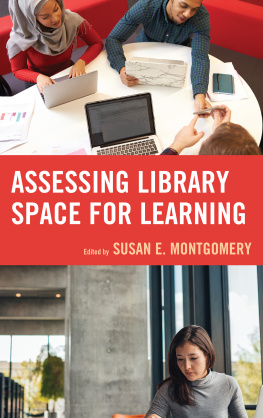


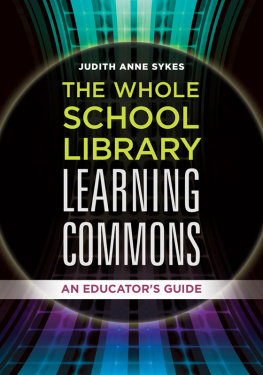


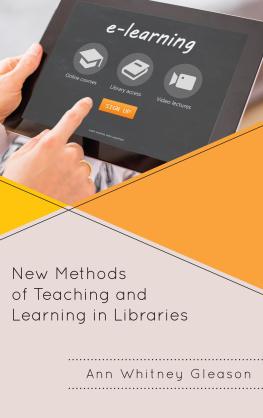
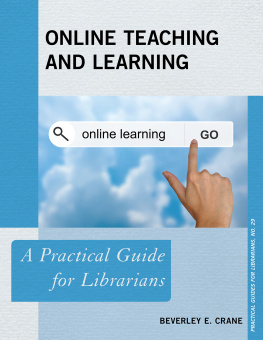
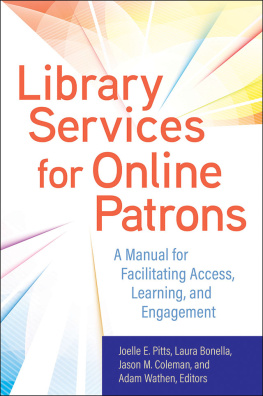
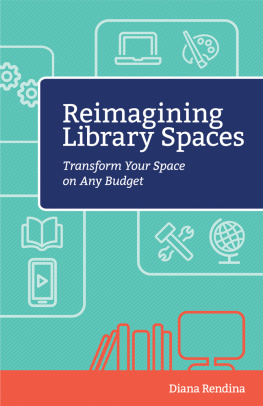
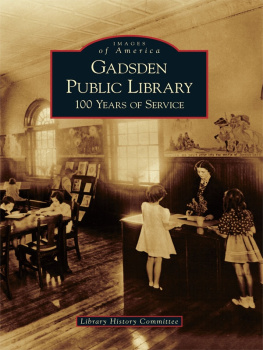
 The paper used in this publication meets the minimum requirements of American National Standard for Information SciencesPermanence of Paper for Printed Library Materials, ANSI/NISO Z39.48-1992.
The paper used in this publication meets the minimum requirements of American National Standard for Information SciencesPermanence of Paper for Printed Library Materials, ANSI/NISO Z39.48-1992.